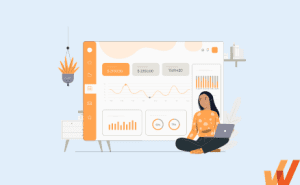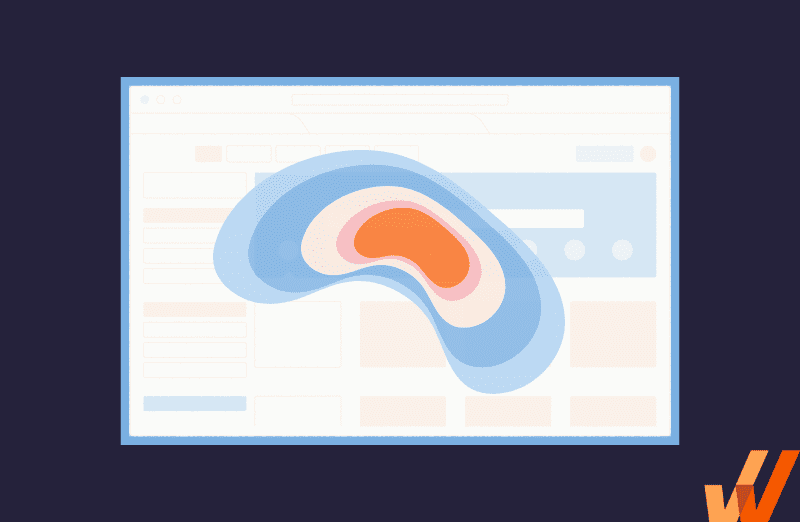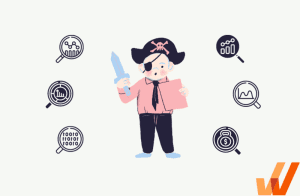If you want to build better products, you need to start by learning how your users are interacting with your current product. When you observe their product usage patterns, you use behavioral analytics and data to discover new features to prioritize, what you need to optimize, and how to change your product to make it more intuitive.
The problem is that you will often have different classes of users who use your product for various use cases, and if you don’t optimize for their needs, they’re likely to churn. Additionally, different segments of users have different backgrounds, demographics, and experiences with technology, and you need to understand these cohorts of users to build a tailored product experience and user flow.
A potential solution is something called user segmentation.
What Is User Segmentation?
User segmentation is the process of grouping different types of users into cohorts based on how they use your product and other demographic characteristics such as experience with technology.
Segmenting users into buckets allows product teams to create more tailor-made products for their different target personas based on how they use a product.
Why User Segmentation is Important
User segmentation is important because it allows product teams to offer more contextual experiences and flows based on the different cohorts’ specific user personas and needs. This ultimately leads to happier customers and users, better conversions, more personalized messaging, and a better overall product.
Some of the other reasons for segmenting users include:
- Better understanding of customer retention
- Enhanced onboarding experience
- Increased customer engagement
- Improved marketing ROI
- Increased feature adoption
Types of User Segmentation
User segmentation separates customers into buckets based on their shared characteristics so you can understand them better and customize your marketing and products to their needs.
- Behavioral segmentation
- Customer data
- Demographic segmentation
- Firmographic segmentation
- Psychographic segmentation
- Technographic segmentation
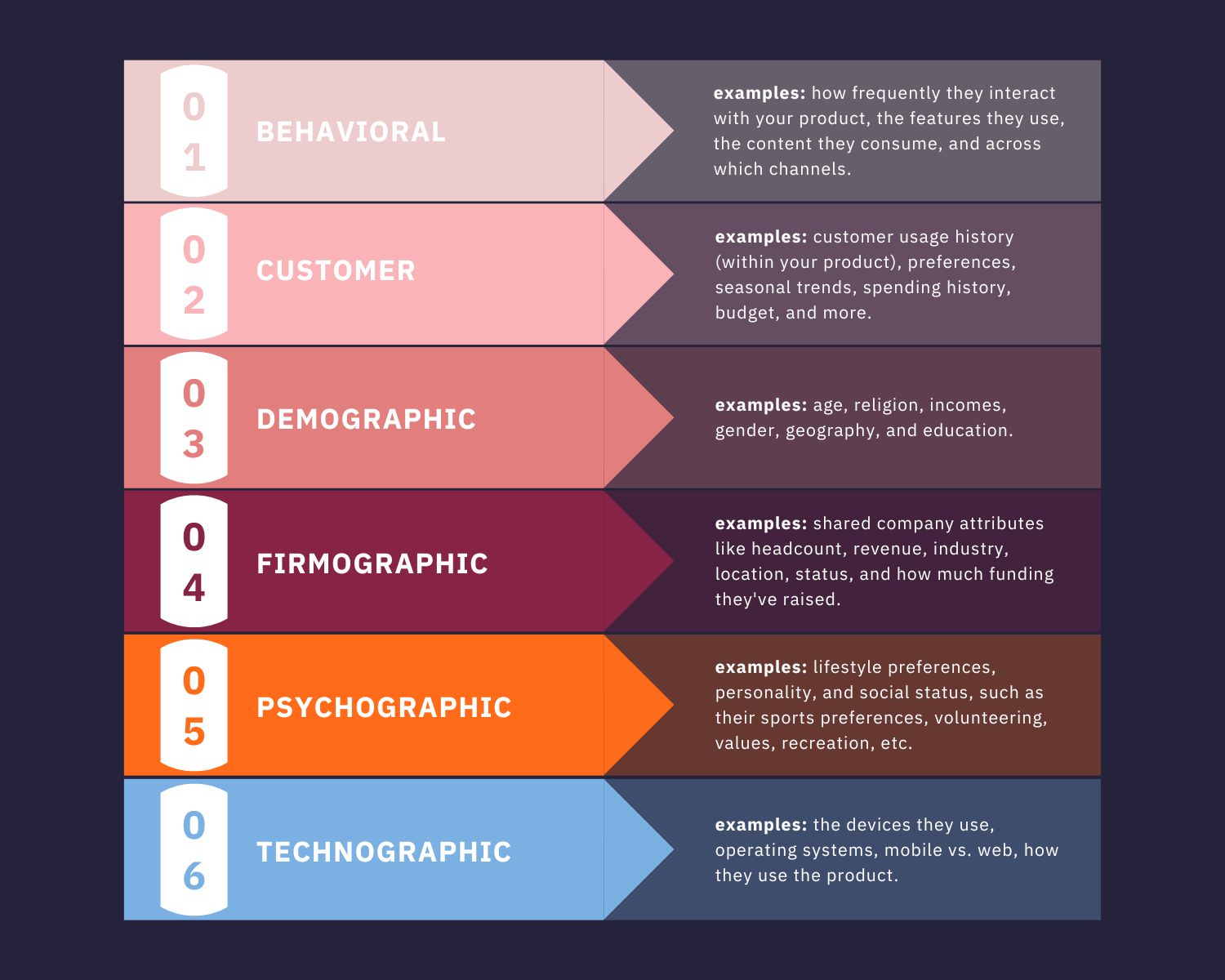
1. Behavioral segmentation
Behavioral segmentation groups users together based on their behavior inside your application. This includes how frequently they interact with your product, the features they use, the content they consume, and across which channels.
2. Customer data
Customer data can segment users based on their usage history (within your product), preferences, seasonal trends, spending history, budget, and more. This enables product teams to target specific users on their website or in their application. It also empowers sales and marketing teams with the data for better customer targeting to improve upsells and drive customer adoption.
3. Demographic segmentation
Customers can be grouped by their demographics and statistical traits, such as their age, religion, income, gender, and education. This is usually a B2C marketing tactic where brands target individual customers vs. B2B where there’s a range of decision makers that can vary wildly in their lifestyle choices.
However, the technology adoption curve shows that different demographics of people have varying preferences when adopting new technologies – meaning product teams should experiment with demographic segmentations to create more intuitive and effective user flows and journeys.
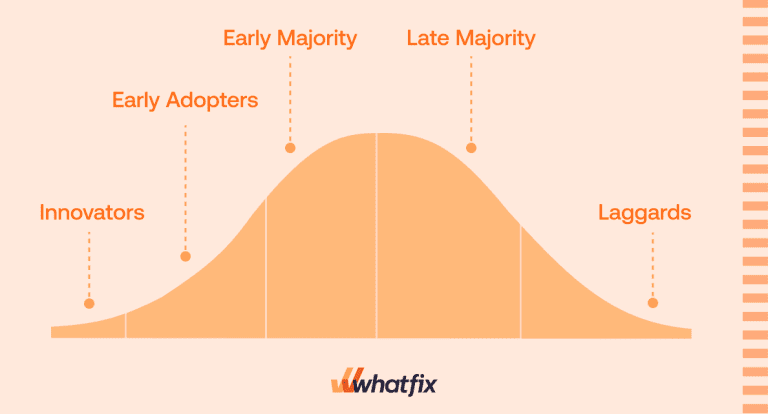
4. Firmographic segmentation
Firmographic segmentation groups (B2B) customers based on shared company attributes like headcount, revenue, industry, location, status, and how much funding they’ve raised. It’s a tactic for narrowing down B2B customers and creating more offers and resources that are more relevant to a particular subset of your audience.
5. Psychographic segmentation
Psychographic segmentation segments users on their lifestyle preferences, personality, and social status, such as their sports preferences, volunteering, values, recreation, etc. This was brought to the mainstream with Cambridge Analytica’s influence on the world’s elections, and its ethics are questionable, especially in the hands of the wrong people.
6. Technographic segmentation
Technographic segmentation can target either individuals or companies.
It groups users by the tools they use and their technology preferences. This can based on:
- The devices they access your website on (smartphones vs. PC).
- Their operating system (i.e. Windows, MacOS, Linux iPadOS, Android, iPhone, etc.).
- How they use your product (e.g. via your product’s dashboard or API).
Technographic segmentation helps marketers and product engineers design applications and create content that is as simple or technical as their users can understand and nothing more.
For instance, millions of visitors visit tech news site The Verge every month, but if they launched a startup newsletter tomorrow, only a tiny bracket of founders, engineers, and startup enthusiasts would sign up. Other users simply may not know enough to be interested.
Examples of User Segmentation
Here are a few real-world examples of how you can segment your users into cohorts to create more contextual experiences, target them with the right messaging, recommend helpful resources, and customize your overall product to their needs.
- Contextual onboarding flow based on a customer’s industry
- Targeting low-usage users with additional product walkthroughs
- Creating personalized product tours based on a user’s role
- Offering promotions based on local or personal holidays
- Using tooltips for users not adopting a new feature
1. Contextual onboarding flow based on a customer’s industry
Users across industries usually have different needs for the same product. For instance, a seed stage startup may use a CRM to keep track of investors, while an enterprise may focus on tracking B2B buyers through their sales process.
In the second scenario, the enterprise sales team uses their CRM to ask new users a few qualifying questions at signup to help them recommend the right resources and features that’ll reduce their customers’ time-to-value so they can start getting an ROI from their product.
Organizations can segment their customers into cohorts and create contextual onboarding flows for each persona. This allows companies to tailor product onboarding and messaging to each segment, helping to drive overall product adoption and help customers find value in your product.
Product managers are empowered to create segmented onboarding UX and product tours with Whatfix’s no-code editor and measure each cohort’s effectiveness with built-in analytics.

2. Targeting low-usage users with additional product walkthroughs
Poor onboarding is the biggest reason (23%) users churn after signup. Even if poorly onboarded users stay, they use only a few features and won’t be eager to upgrade because they failed to find ROI.
A segmented user campaign can target all your users who spend below a specific number of hours using your product per week (or month), send them into a user flow that includes contextual interactive walkthroughs to drive adoption, and offer them a no-commitment meeting with a product advocate to educate them more on how to get the most out of the product.

Example of an interactive walkthrough built with Whatfix.
3. Creating personalized product tours based on a user’s role
Once you understand and segment the different types of customers using your product, you can suggest pre-recorded demos and product tours for those different user personas based on their role, title, and seniority.
Depending on your company’s size, your customer success team may not have the bandwidth to manually onboard new users and show them around your product. But once you can split users into segments, you can create collections of onboarding resources, product how-tos, and demos specific to their use cases.
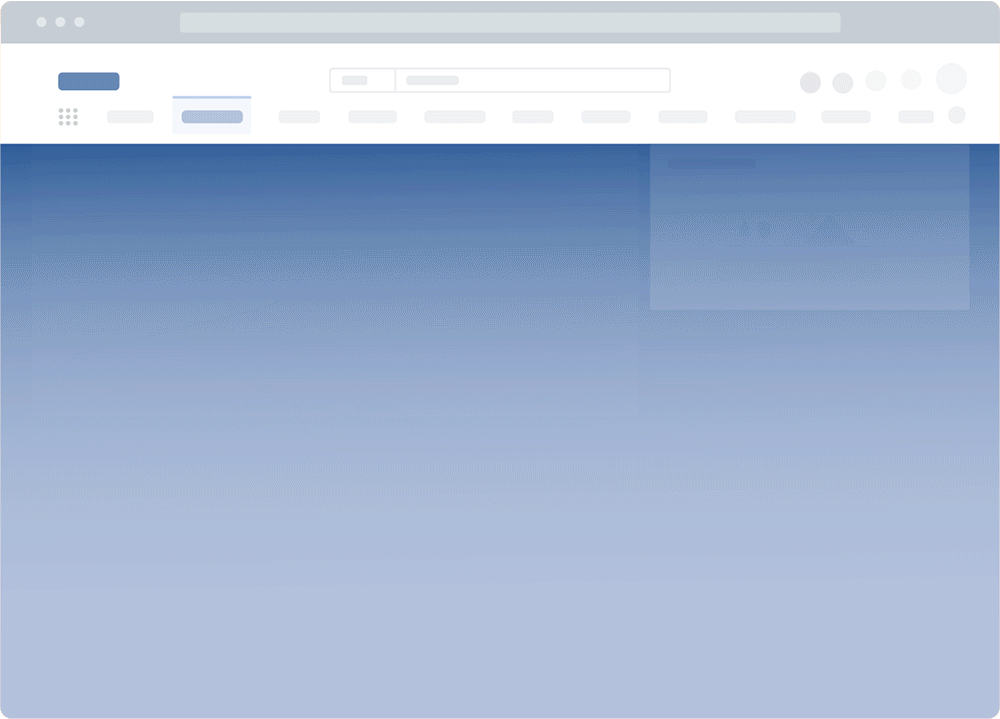
Example of a product tour built with Whatfix.
4. Offering promotions based on local or personal holidays
You can segment users based on their demographics, such as the country they live, their religion, or their birthday. For instance, Indians spent $15.6 billon on Diwali-related promotions in 2021, while American Black Friday sales crossed $876 billion in 2020. Splitting users into specific demographic brackets will help you co-promote your offers on the most significant holidays they care about and are already more likely to buy on.
5. Using tooltips for users not adopting a new feature
New users will often overlook certain features in your product because they already found what they came for. You can send nudges and notifications that explain how the rest of your product can help them bring their work into one place. This is perfect for complex or underutilized features, and for driving adoption of new features.
![]()
How to Get Started With User Segmentation
Here are a few real-world examples of how you can segment your users into cohorts to create more contextual experiences, target them with the right messaging, recommend helpful resources, and customize your overall product to their needs.
- Set up user engagement tracking with a product analytics tool
- Identify your business and product goals and priorities
- Define user segments based on those priorities
- Analyze and monitor your user behavioral analytics and data
- Test and make changes based on your segmentation experiments
1. Set up user engagement tracking with a product analytics tool
Product analytics software empower you to track on-page time, record sessions, user flows, and test different variations of the product and its messaging to create better experiences. These platforms also capture custom events set up by the product team. This data is automatically aggregated and captured in real-time, with reports and visualizations created in a self-service analytics dashboard.
Whether on a product, marketing, or sales team, product analytics removes the guesswork around user behavior and makes it easy to know what to optimize and prioritize in your roadmap.
2. Identify your business and product goals and priorities
Are you trying to increase usage, revenue, social capital, market share, or just plain trials for your product? Your goals will help you decide on a segmentation model and how you will implement the data you collect from it.
3. Define user segments based on those priorities
If you’re trying to increase revenue, then you might want to focus aggressively on specific firmographic metrics to make sure you’re marketing to customers that have the budget and scale to pay for your product.
If user retention is your priority, then your goal should be to target the decision-makers who’ll get the most use out of your product and consider paying for it. Determine only one or two segments to focus on per time, depending on your company’s goals per month, quarter, or year.
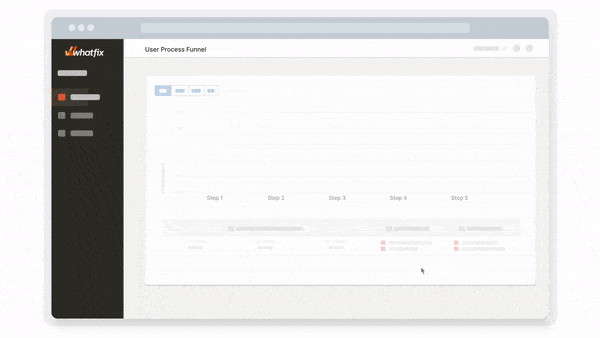
4. Analyze and monitor your user behavioral analytics and data
Use behavioral analytics tools like session replays or heatmaps to determine what your user experience looks like for individual users. You can also study your heatmaps to understand which elements users are engaging with or getting stuck on.
5. Test and make changes based on your segmentation experiments.
A/B test multiple versions of your landing pages, design elements, onboarding flows, drip campaigns, and in-app notifications with different batches of users and record your observations.
You can leverage Whatfix Product Analytics AI to analyze the data from these tests.

Easily track and analyze product usage and user engagement with Whatfix’s no-code product analytics software
Instead of guessing why your new accounts are not using your product more or how you can reduce churn, you can segment customers into smaller cohorts, personalize your marketing to each group, and use advanced product analytics to decide which features to build, improve, or remove from your product.

Whatfix Analytics is designed to empower product teams to personalize their user experience, onboard customers faster, and increase retention with interactive product walkthroughs – all to ultimately empower end-users and drive overall product adoption.
Our adoption engine helps engineering and marketing teams watch how customers use their products, remove friction points, and reduce churn with experiences tailored for specific customer segments.
Learn how Whatfix can help you create a user-friendly product experience with powerful analytics and user segmentation now.


